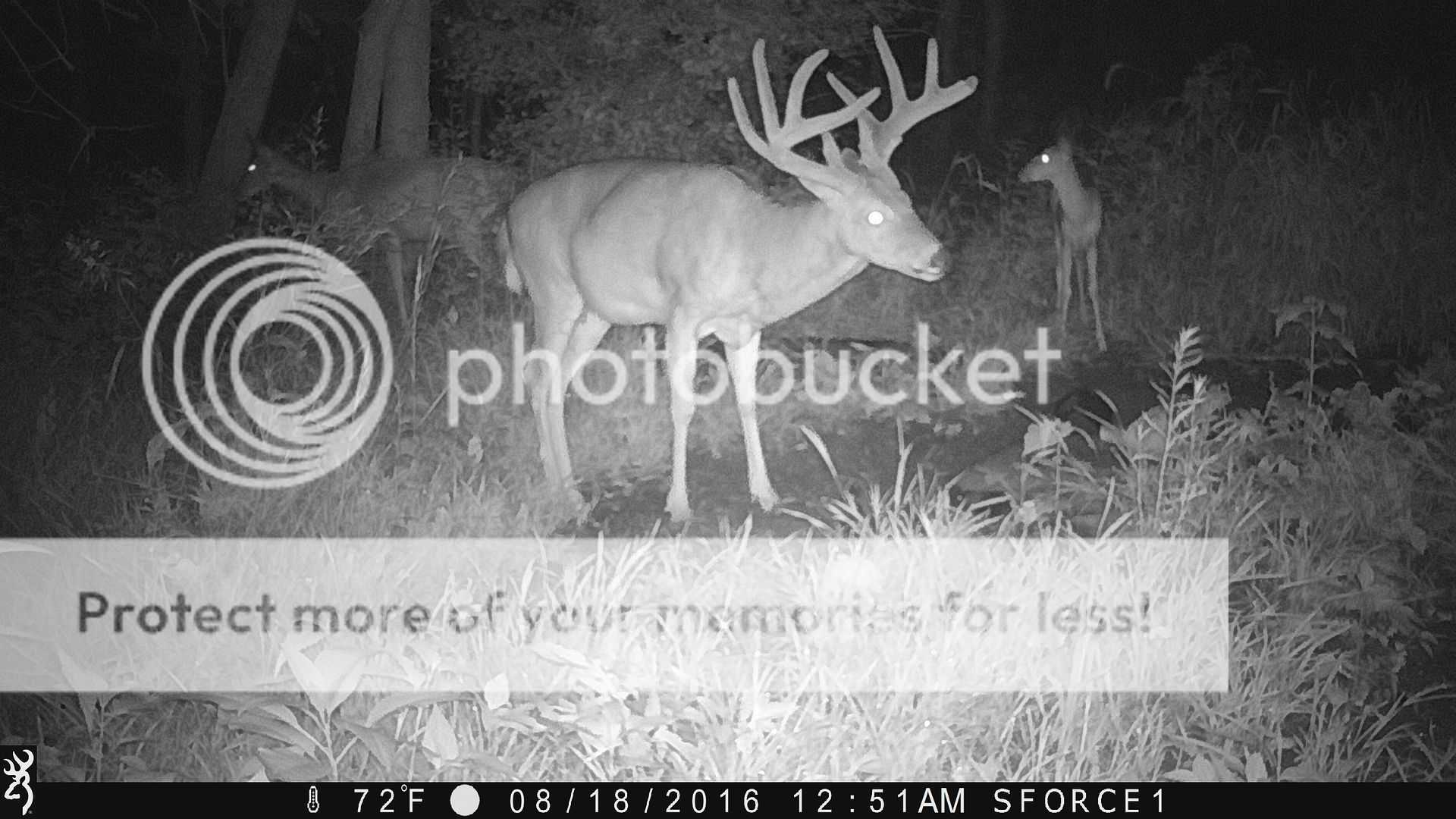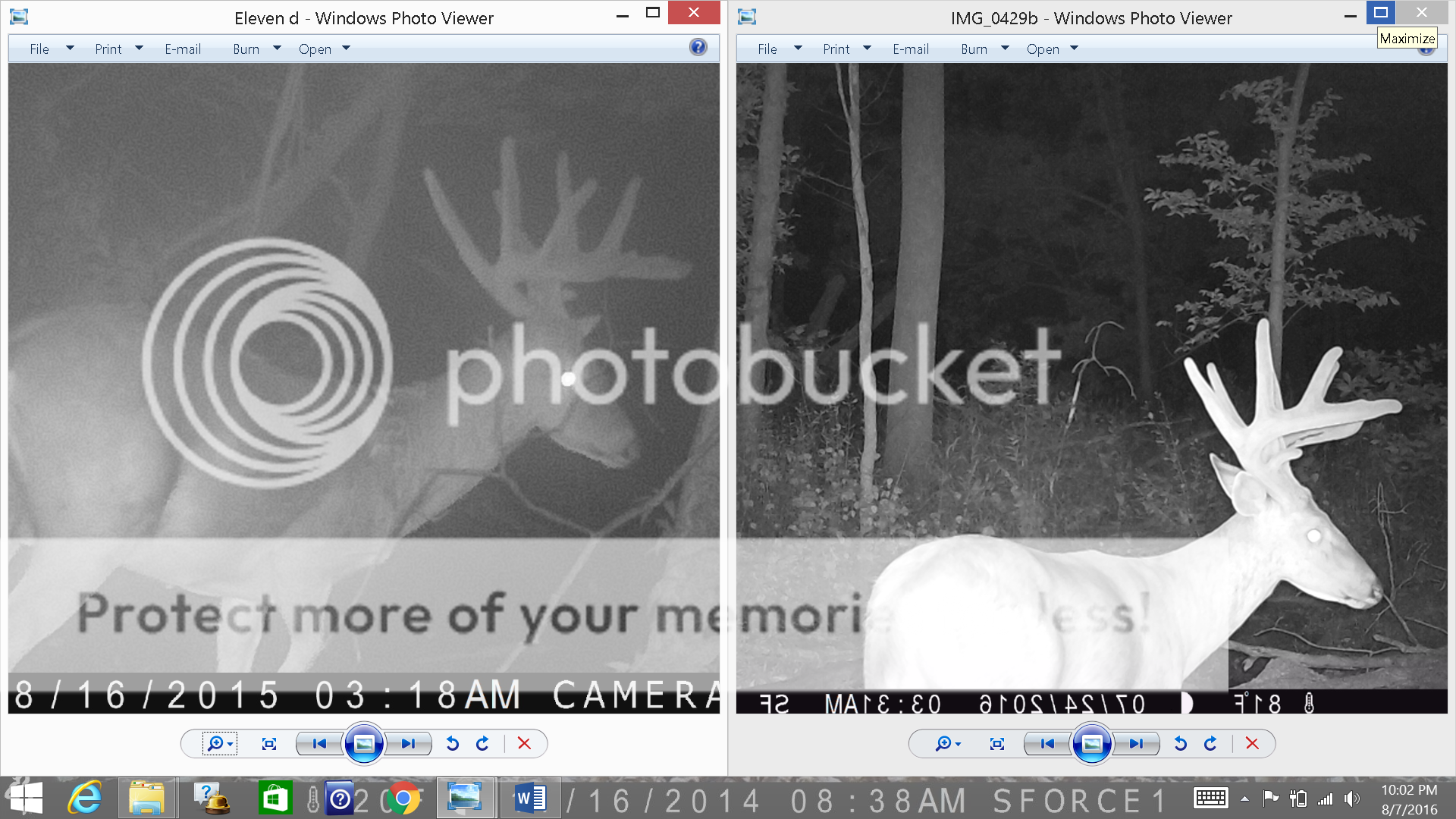We certainly agree that there are numerous factors that effect when a buck may have his best rack. As mentioned I feel very confident that 'most' of the bucks in S. Texas/Mexico peak between 7 and 8. That is a generality but almost all serious managers down there look to get bucks past 6. The biggest buck I ever took off my ranch was 10. Reviewing my annual ranch video from last yr I counted 33 bucks that were 6 or older. That is the typical profile for many years now on my property and would be similar for all the ranches in our 120,000+ acre neighborhood. I am unfamiliar with any place of that continuous scale in the north that allows a preponderance of bucks to exceed 6 yr old with many dyeing of old age. Wouldn't it take something like that for statistical validity?
I remain curious still as to when the bucks on my La. farm as well as most of the north may peak. I am familiar with only one operation in the north that manages for age the way the Texans do [ no buck shot before 6 or 7 ] and that is a property on Long Island New York set up by Dr. Harry Jacobson. The results there are phenomenal however I don't have much detail beyond the photos I see. I see it as impossible to determine peak age unless and until most of the bucks in a given area are allowed to reach the oldest age classes and indeed dyeing of old age. If a few are allowed to be 7 or older but the best ones are shot earlier that foils the survey.
All I know about Charles Alsheimer's pens is what I have read and the pictures I see. Indeed I understand it is 35 acres and I have no idea how many deer he has in it. I still find validity to his findings though. Bucks grow their biggest racks at some age whether in a pen or"free range'. The pen he has allows bucks to achieve these older age classes. I place far less significance to the fact that these deer are in a pen and thats why they grew their biggest rack at 7 yrs old vs a 7 yr old on free range on an equally high nutritional plane. I say that because as bucks move into the oldest age classes of 7 or older their personality changes yet again, they move less, fight less or usually not at all, are well known to their cohorts [ pen or not ] recover quicker after the rut and all that can translate to additional growth for some.
The smallest game fenced property I work with is 2500 acres. The largest is 40,000 acres comprised of 5 ranches. Embedded in there is a 15,000 low fenced pasture. Our neighbor to the east has 10,000 acres low fenced which I am very familiar with. I offer that to say that I think 'free range ' vs game fenced has absolutely no bearing on when a buck peaks at least in that scenario. Whenever they peak I believe it is a function of biology, individual genetics effecting how they age, to some degree how beat up or permanently injured they may have become entering the breeding pool and achieving older age, and certainly how long they are allowed to live. This with the assumption that nutrition is a constant.
Regarding Jay MacKinicks comments I may need to understand better what he is saying. I've watched numerous bucks grow old and die. I filmed a 14 yr old this past season which I'm pretty sure died before season end. I have video of him every yr. since 2004. Without exception all the bucks started running out of antler gas at some age...usually 9ish though some older.
I agree that It'd take something of a similar scale in the north. I don't pretend to know when the average peak is up here. If forced to guess, I'd put my money on 6.5. I'm basing that on both my experiences on large free range tracts and the experiences of another manager that runs an 1800 acre, natural genetics, no artificial feeding high fence. I've just had sooooooooooo many that actually dropped from 4.5-5.5 or 5.5-6.5 and a respectable number that dropped 6.5-7.5, as well as bucks that made jumps seemingly out of no where, that I can't pretend I'm right on that, just that it's my best guess....And I agree that it takes very big numbers of bucks dying of old age over many years to come up with what one can view as a concrete answer to when the ave peak out at.
We'll have to respectfully agree to disagree on to what extent we believe fighting, injuries and I'll add in disease impact when bucks racks peak. Also complicating matters in northern states is that relatively few allow year round feeding, and nutrition can and does vary fairly significantly year to year, based on growing conditions. I wouldn't be surprised if fighting doesn't impact northern deer more than southern deer, in that they both likely endure very similar rut and fighting stress levels, but Midwestern and northern deer than face winter right after breeding. Winter can be VERY stressful on northern deer (winter kill is not uncommon) and even be a significant factor for Midwesterners. So, they get a 2 punch combo right after each other, while southern deer don't know what winter is. So, they likely are able to recover easier from fighting, with comparatively little winter stress and still having a surplus of nutrition (nutrition levels are at a seasonal low in winter up here...way, way lower that any other season).
Again, we'll have to respectfully disagree on the size of the fence and number of similar aged bucks inside it not impacting antler growth. In my mind, if you don't have to fight for breeding opportunities, I have to believe the odds of long term bumps and bruises making future years harder drops to virtually nothing, where I am convinced that's a very significant factor in what a buck will grow on his head. If you only have 1 buck and a couple does in a fence, there is no fighting and they don't have to work as hard for breeding, which theoretically massively reduces stress, which is a major part of why many deer farmers separate bucks during the rut. I can see your point on the large fenced areas, though, assuming population dynamics are reasonably similar to free range.
Jay was saying that it's the price we all pay getting old (long term physical degeneration) that causes racks to go down, not something coded into their system. So, Let's say Charlie's buck was the only one in the pen with a couple does. Odds would say that buck would most likely be healthier at 7 (because of no fighting and not working hard at all to find those couple does) than the same aged free range buck living on grounds with healthy population dynamics (he likely fights and works much, much harder to find does, running himself down at a way higher rate than a buck in such a controlled environment). All else being equal, the small penned buck should have way less stress and larger racks for a longer period of time. I'm not saying he's right or wrong...just passing on what he told me.
I'm NOT trying to say I'm right and you're wrong on anything we're respectfully disagreeing on. This is just my opinion and I'll be the first to say that it would take a lot more of a controlled environment than I have access to to "prove" any of this. Also, I understand high fences are a touchy issue. I'm not ripping the fences and think conclusions drawn on high fence deer generally don't get the credit they deserve. That said, I do also believe that the fences do have an impact, as well. The most obvious is that the deer can't leave that area if they choose, where as free rangers can leave anywhere at any time. I do believe fences can/do have an impact. I haven't seen any 300" free range bucks, let alone 400"+. I'm NOT trying to be offensive with that statement and personally have nothing at all against high fences. If it wasn't for professional reasons, I'd LOVE to manage a natural genetics, large high fence. To not have to scheme to get bucks to spend as much time on your ground as practically possible would be sooooooooooooooooooooooooooooooooooooooo nice and reduce management stress levels incredibly.
I don't even have an issue with small high fences. I don't see the small high fences as being any different than raising and slaughtering cattle. It isn't for me, but neither is being a beef farmer and I have nothing against that, either.















